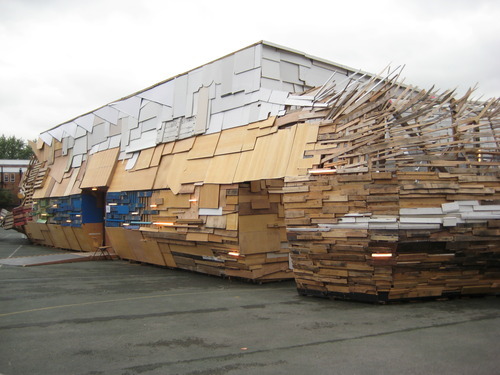© H.O.R.T.U.S by ecoLogicStudio
The members room at the Architecture Association looks cyber-exotic with its vivid green apple carpets and 300 intra-venous bags hanging from the ceiling : mimicking the blood of an urban ecosystem, the bags hold nine shades of green from different kind of algaes.
The concept of H.O.R.T.U.S. (Hydro Organism Responsive to Urban Stimuli) appears technical or confusing (read here) but is simple : while blowing into plastic bags, viewers create enough CO2 to sustain the oxygen needed to produce algae organisms. The bags possess a QR code that visitors scan to find which algae they are producing. By helping it grow, they become part the garden.
 © H.O.R.T.U.S by ecoLogicStudio
© H.O.R.T.U.S by ecoLogicStudio
EcoLogicStudio quotes Gilles Clement as introduction to its eco-garden - 'If we look at the earth as a territory devoted to life it would appear as an enclosed space, delimited by the boundaries of living systems [the biosphere]. In other words it would appear as a garden' - as for Clement, the 'Symbiotic man', is an actor of the 'Planetary Garden' and its task is to find out 'How to exploit diversity without destroying it ?'. Clement conceives the environment as a place of constant 'recycling of energy with no accumulation of waste other than decomposable organic matter'. Somehow, this is what H.O.R.T.U.S. explores by inviting viewers to give life to the mini ponds of an algae farm.
 © H.O.R.T.U.S by ecoLogicStudio
The greenhouse cohabits with a virtual garden that feeds on visitors' scans and tweets about the exhibition but we don't need this association to grasp the idea that the garden is connected to the viewer and the garden to the viewer - thus the initial confusion : the fact that we participate to the biosphere's expansion, is an idea already embedded in the work.
© H.O.R.T.U.S by ecoLogicStudio
The greenhouse cohabits with a virtual garden that feeds on visitors' scans and tweets about the exhibition but we don't need this association to grasp the idea that the garden is connected to the viewer and the garden to the viewer - thus the initial confusion : the fact that we participate to the biosphere's expansion, is an idea already embedded in the work.

These days, architects are versatile in reclaimed wood, pallets and sustainable means of construction - like the crates our parents used as bookshelves when we were kids or the pallets used by permaculture gardeners to build city allotments today - : pioneers of situationist architecture, Exyzt, Collective ect., Raumlabor, Constructlab use collective involvement and flexible, low-tech material.
 © Exyzt
© Exyzt
In Portugal, in Guimaraes, Exyzt is leading construction workshops for Fine art and Architecture students using traditional ways of building. Students are not sitting behind computers but building a crafted platform, with bespoke chairs, to be used for a Laboratorio de Curadoria. The platform is built in a way that puts the human hand and the human brain at the centre of architecture : the design doesn't rely on machines here.
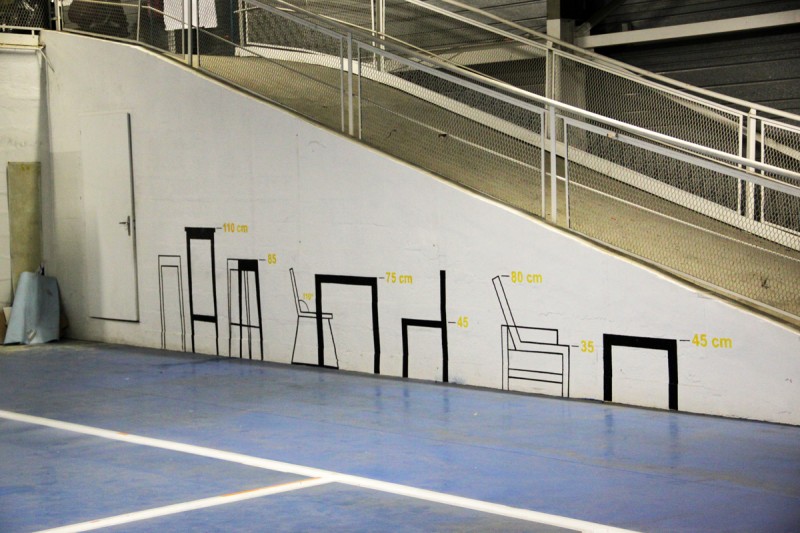
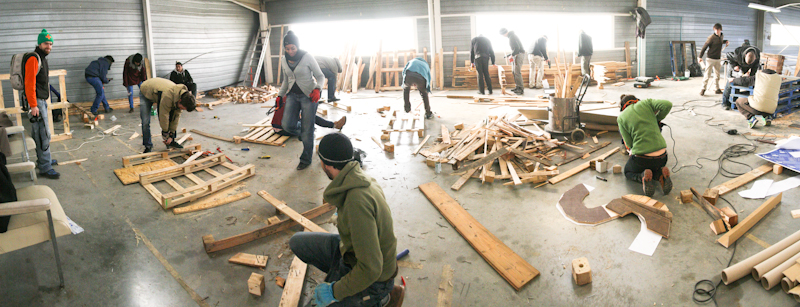 © Collective etc., La piscine [taken from Collective etc. web page]
© Collective etc., La piscine [taken from Collective etc. web page]
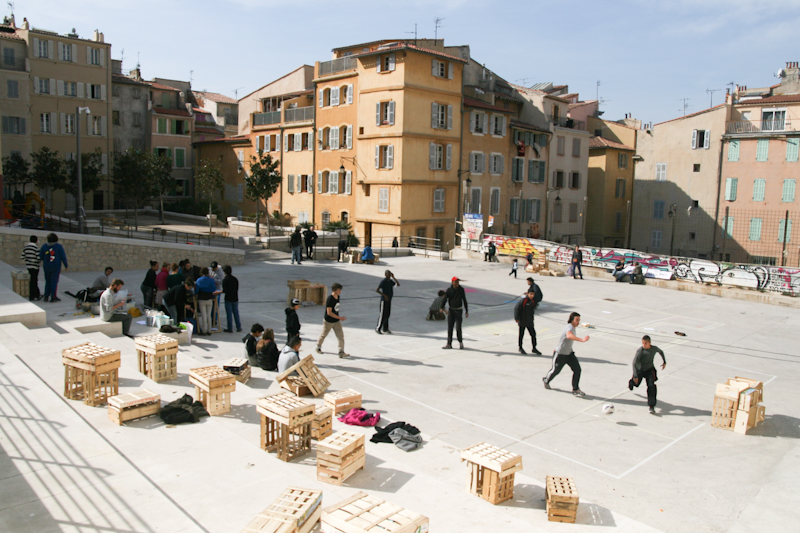
© Collective etc., Marseilles - Le Panier's area nomadic workshop [taken from Collective etc. Facebook page]
In Grenoble, Collectif etc. runs collective workshops, at La Piscine, empowering locals to 'self-build' low-cost, DIY furniture, investigating for a better habitat. In Marseilles, they bring the nomadic urban intervention to the residents of Le Panier, using wooden pallets, to share concerns about the regeneration of their neighborough.
Constructlab (Build your own shelter, intervention in Annecy's Art & Design school) or Raumlabor similarly use crate-looking planks as staircases, viewing-sitting platforms, partition-walls, to host temporary community projects. Raumlabor's ingenious design (workstations and chairs) encourages viewers to 'learn by doing', by building collectively.
The collective also explored the idea of 'sustainability' by pilling up discarded furniture, doors and windows at The big crunch.
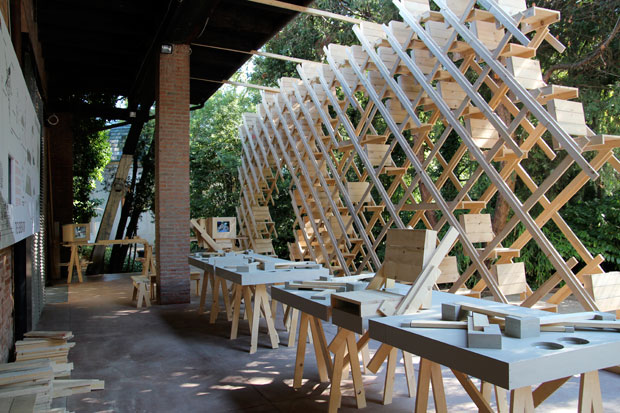 © Raumlaborberlin [taken from Raumlabor's web page]
In 2010, Oikos proposed to re-use reclaimed wooden planks and pallets to build The Jellyfish Theatre. 'Focusing, on energy-efficiency, co-operation and human-scale', creating performative and temporary constructions, making space and giving space (back) to the community.
© Raumlaborberlin [taken from Raumlabor's web page]
In 2010, Oikos proposed to re-use reclaimed wooden planks and pallets to build The Jellyfish Theatre. 'Focusing, on energy-efficiency, co-operation and human-scale', creating performative and temporary constructions, making space and giving space (back) to the community.
© Oikos project [taken from Oikos flickr]









